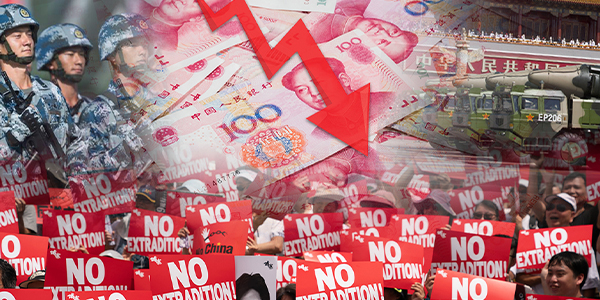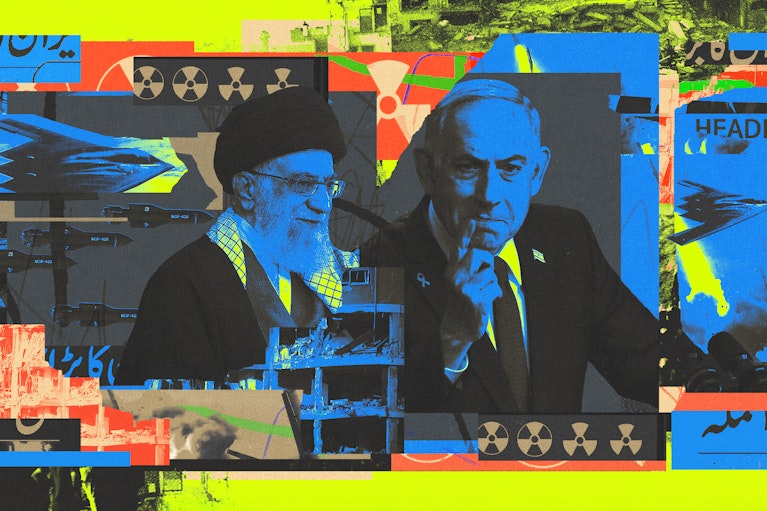Nathan Gardels is the editor-in-chief of Noema Magazine. He is also the co-founder of and a senior adviser to the Berggruen Institute.
Once among the most stable regions in the world and a key engine of global economic growth for nearly half a century, the Asia-Pacific has suddenly, this summer, descended into turmoil. Several sleeping dogs that have lain dormant for decades are stirring and converging into a generalized crisis.
Though tensions have been building for some time, China and the United States are now poised for a perilous slide into the very kind of beggar-thy-neighbor currency war combined with protectionism that led to depression in the 1930s. Mass protests in Hong Kong against the erosion of autonomy from Beijing have gone on for so long, and include such a broad swath of civil society, that they can now be said to constitute a rebellion. That standoff has further stoked Taiwan’s determination to stand up for its democratic ways through purchasing a new fleet of advanced fighter jets from the U.S.
The wounds inflicted on Korea by Japanese imperialism once thought healed by mutual prosperity are suppurating again, dragging America’s top allies in the region into their own trade war that pits justice for “comfort women” against the high-tech imports from Japan that fuel South Korea’s export economy.
If all this weren’t enough, the American withdrawal last week from the Intermediate Nuclear Forces Treaty, aimed at reducing the risk of a clash with the Soviet Union during the Cold War, has opened the door for the U.S. to counter China’s increasingly formidable force of mid-range missiles that can reach across the Asian theater. Not missing a beat, U.S. Defense Secretary Mark Esper has already announced plans to place American missiles in the region.
These fresh disruptions have almost eclipsed, for the moment, the long-standing threat of North Korean nuclear weapons and the missiles that would deliver them. Paradoxically, since all the parties presently converging into crisis have a common interest in curbing the menace from Pyongyang, progress on that front would demonstrate anew the value of cooperation in securing stability. As the old Stoic saying goes, the obstacle can be the way.
Writing in The WorldPost this week, Robert Carlin and Siegfried Hecker, the former head of America’s nuclear labs and one of the few Western scientists to inspect North Korea’s nuclear sites, argue that negotiations are at a “hinge point” that could lead to an entirely new era of disarmament, or a return to the dangerous gamble of brinkmanship.
As the authors point out, there is plenty of blame to go around on all sides going back years for missing fleeting windows of opportunity that would have lessened instead of exacerbated conflict, the most recent of which was the Hanoi summit last February.
With both sides hewing to maximalist demands — full lifting of sanctions versus immediate nuclear disarmament — the summit failed. The North Koreans misread the situation by believing shutting down the Yongbyon facility would be enough for the U.S. to end sanctions, while the U.S. dismissed this significant step as insufficient. This, say Carlin and Hecker, fits the pattern of failing to seize past hinge moments, resulting in North Korea going from zero nukes in 2001 to as many as 60 today.
“As has happened several times over the past two decades,” they write, “it remains possible that the U.S., having inadequately assessed the risks and benefits of accepting a less-than-perfect step with the North, could end up with North Korea possessing an even more menacing nuclear arsenal. The glib mantra quickly shared by both political parties in Washington after the summit — ‘a bad deal is better than no deal’ — has served only to rationalize a bad decision.”
Though it has so far refrained from further nuclear or long-range missile tests since the failure in Hanoi, North Korea is inching toward its old pattern, testing shorter-range missiles and announcing the construction of a new submarine. “Today,” the authors observe, “there is a window of opportunity, but it may be quickly closing. Pyongyang seems once again to be miscalculating timing. Washington’s appetite for and interest in a deal seems to be diminishing the longer the North Koreans put off reengaging.”
Yet, as the remarkable, spontaneously organized meeting of President Donald Trump and North Korean leader Kim Jong-un in June at the Panmunjom demilitarized border zone demonstrated, the window has not yet closed. “It is going to take both sides to recognize the importance of the moment,” say Carlin and Hecker. “On the U.S. side, that means not just the negotiators or the administration but also the broader foreign policy establishment and the political forces that will help shape the environment in which a far-reaching agreement will either be sustained or wither on the vine.” The shutdown of the Yongbyan facility, they argue, ought to be salvaged as a basis to move forward, not dismissed as an excuse to go backward. Having chronicled the long list of past failures, they ask, “compared to what?”
What the historical record shows with respect to North Korea is that an “all or nothing” approach in settling conflicts inexorably leads to a far worse situation. This lesson applies across all the present disputes that are destabilizing the Asia-Pacific.
Stability is the condition for both freedom and fortune. Unless all players recognize that achieving this end requires give-and-take compromise instead of unbending nationalistic egoism, they risk destroying a key load-bearing pillar of the long peace that is in ever-more dire jeopardy with every passing day.





